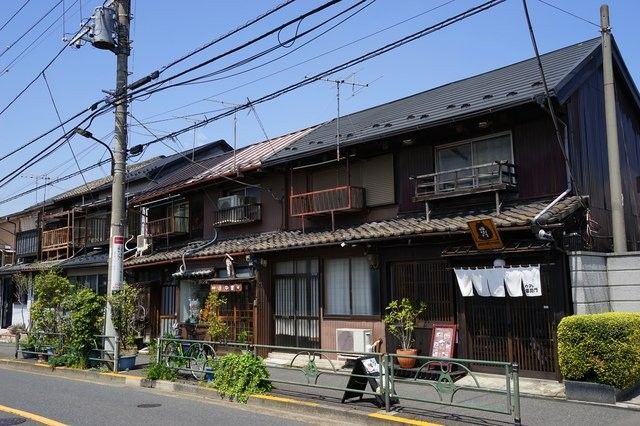How Tokyo Could Become a Thriving Circular City
Faced with the global environmental crisis of climate change, it's imperative for Japan to build a circular economy—one that utilizes its limited resources efficiently.
Japan's Edo period, and the city originally named Edo—now known as Tokyo and said to have been a circular and sustainable city—flourished from 1603 until the restoration of imperial rule, in 1868. Drawing inspiration from the lifestyle of Edo, the Tokyo Metropolitan Government (TMG) has formulated the Tokyo Bay eSG Project (Environment, Social and Governance Project), which aims for sustainable urban development that integrates convenience and nature.
A unique culture developed during the Edo period, with one of its defining features being the circular nature of the city of Edo: Its energy and resources, including clothing, food and housing, were supplied domestically and all were recycled and reused. There are things we can still learn today from this time period about how to utilize resources in the most efficient way possible.
We asked Tanaka Yuko, a former president of Hosei University and a professor emeritus of Edo-Tokyo studies at the Hosei University Research Center, about the type of city Tokyo might aim to be from an Edo perspective. This interview has been edited for length and clarity.

Edo's Energy Example
The goal of the Tokyo Bay eSG Project, TMG's urban vision for the Tokyo Waterfront City and the Central Breakwater Reclamation areas, is "to have 100 percent of [their] energy needs met by clean energy." Only clean energy was available during the Edo period. I think this is key.
The Tokyo Bay eSG Project is a plan for Tokyo's urban development over the next 50 to 100 years. Version 1.0 was established in April 2021. In February 2022, TMG released an update to accelerate its efforts and to clarify its future plans.
Nights were dark during the Edo period, and the only light available was provided by paper lanterns lit with a small amount of oil. I gave it a try myself, and I was unable to read a modern book by the light of the lantern, but it was enough to illuminate books and ukiyo-e woodblock prints from that time.
In other words, people in the Edo period made their lives more livable by adapting to the sources of energy available to them. Today the opposite is true: We are continually trying to secure enough energy to protect our current lifestyles.
To achieve a circular economy, we need to adjust our lives to match the amount of energy we are able to procure and then from there transition to clean energy. Both changes are needed, in my opinion.

Making the Most of Tokyo's Canals and Gardens
Edo was a city filled with an abundance of nature compared with other European and Asian cities. If Tokyo were to revert back to being more like Edo, it would surely be seen as an attractive city in the eyes of the world, with water and greenery close at hand.
One particular focus for me has been modern Tokyo's canals. Edo was a city of riverbanks, with a great many boats constantly passing by. I think that if we were to move boats along Tokyo's existing rivers and use them as transportation routes, it could change the way the city's residents think about its water. It would be somewhat slower to travel and transport goods by boat, but it might inspire people to keep the rivers clean.
Another resource I would like to see made use of is Tokyo's gardens. Japanese gardens are characterized by a sense of unity and respect for nature. Edo gardens were located within the residences of feudal lords—so commoners were not allowed to enter—but all together the greenery covered a truly vast area.
There are many beautiful, landscaped gardens specific to Tokyo that can be experienced nowhere else in the world. Capitalizing on and promoting these gardens, as well as increasing the amount of greenery available to the public around the city, would also draw the world's attention to Tokyo's uniqueness.
Reviving Tokyo's Bay Area
To create more comfortable "human-centered" spaces in the modern age, one thing I would like to focus on is revitalizing row house communities. Modern industrialization has separated the home from the workplace. But the row houses of Edo served not only as residences but also as places of business—what we now refer to as mixed-use development.
The COVID-19 pandemic has caused many of us to consider whether we could continue to live in and work from the same place. I believe that if we were to create modern row houses in the Tokyo Bay area, it would evolve into a place that could connect people, especially young people, not only in their lives but also in their work.

Tokyo gave up a great many things in its transition to modernity. Some we could do without, but many were too good to throw away. Tokyo's canals, gardens and row houses are highly distinctive features admired around the world.
Rather than aiming to evolve along the same path as other cities, I have high expectations that by bringing back the unique character of Edo, Tokyo can become a city impossible anywhere else.
Tanaka Yuko

Tanaka Yuko is a former president and professor emeritus of Hosei University; specially appointed professor of the Hosei University Research Center for Edo-Tokyo Studies; and chair of the Tokyo Metropolitan Council for Gender Equality.
Source: How Tokyo Can Become a "Circular City" As Taught by the Edo Period